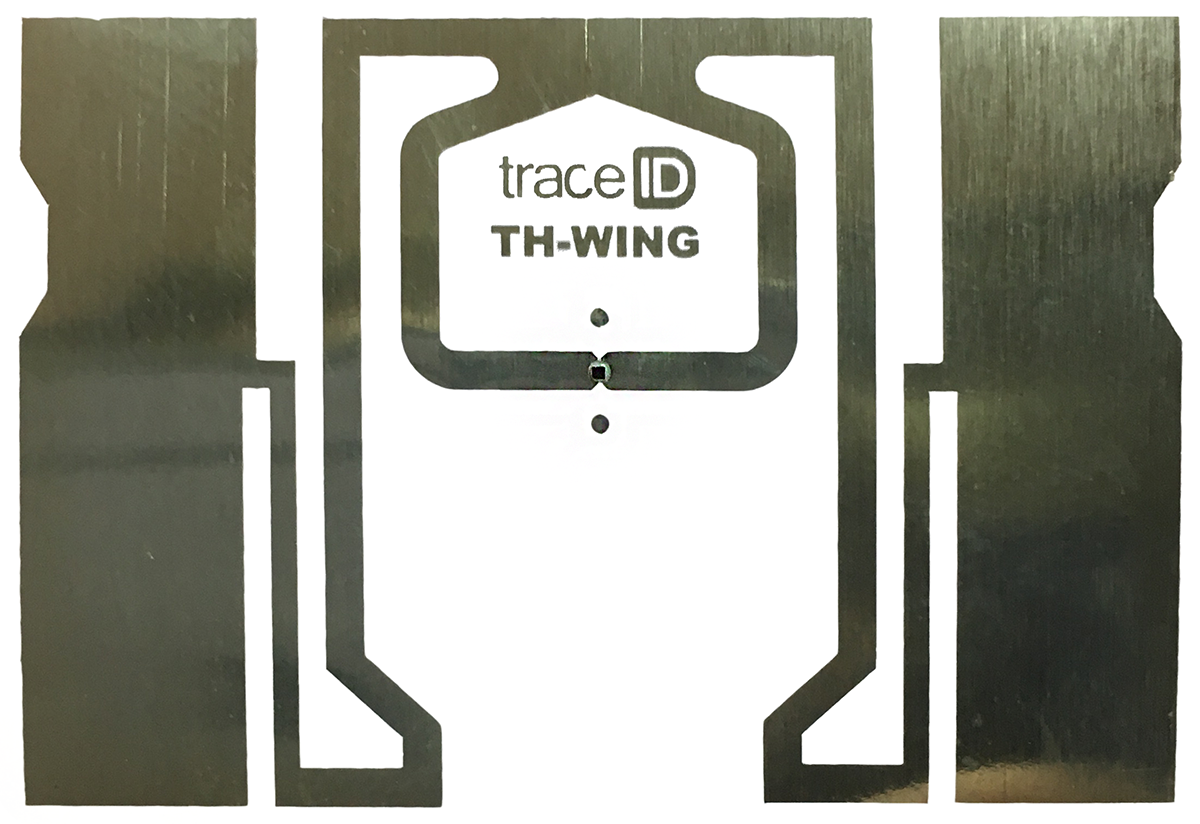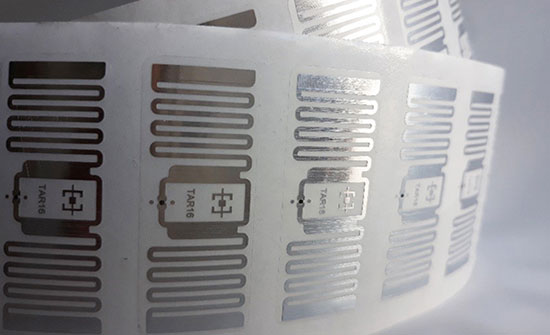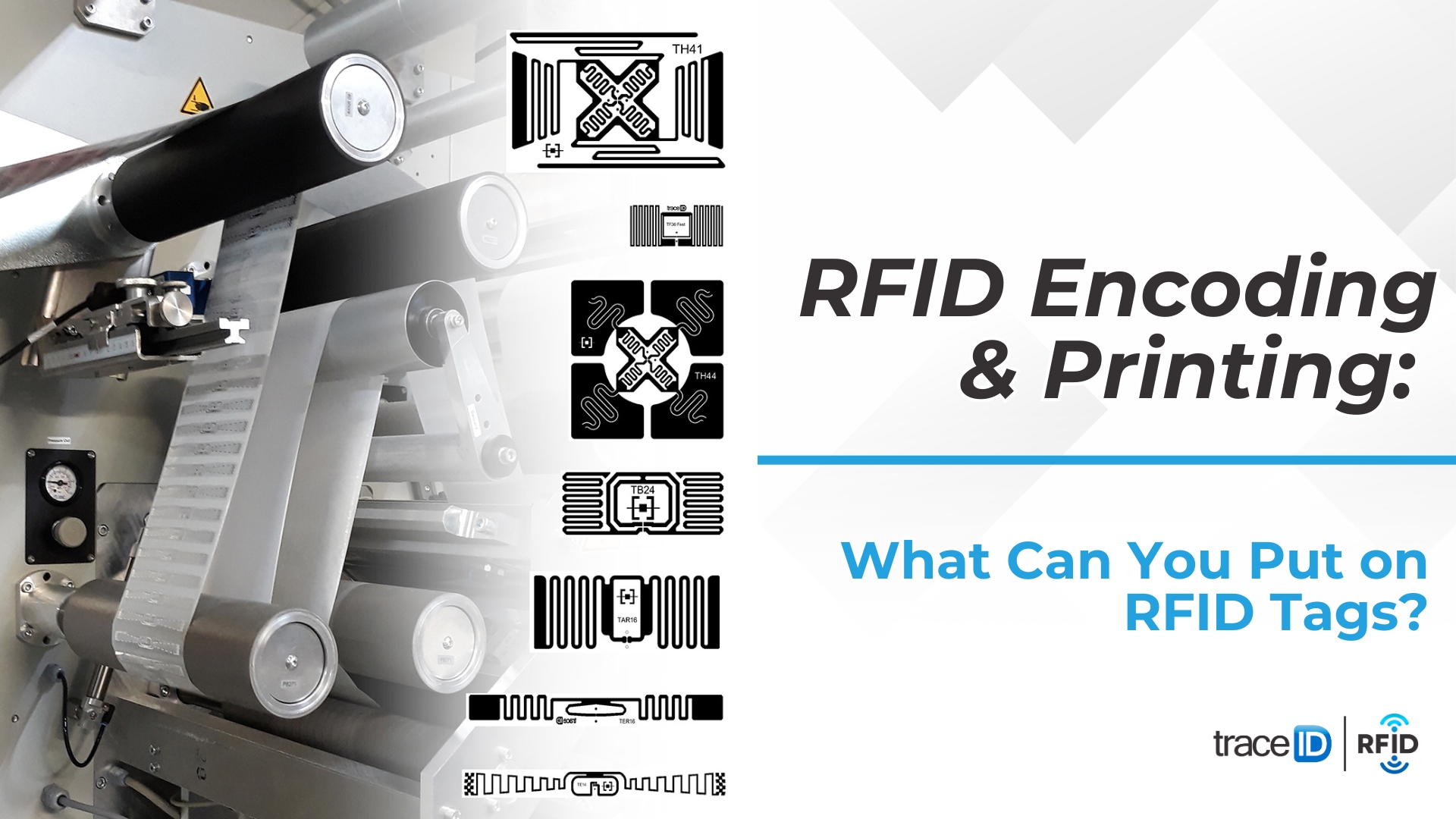Introduction
RFID technology offers flexible encoding and printing options, allowing users to store essential information on RFID tags and labels. This article explores the types of data that can be encoded into an RFID tag’s memory and the information that can be printed onto the tag’s face.

Encoding: Understanding RFID Memory Banks
Each UHF RFID tag contains four distinct memory banks, each serving a specific purpose:
- Reserved Bank: Stores 32-bit access and kill passwords, ensuring security and controlled access.
- EPC Bank: Originally designed for Electronic Product Codes (EPC), this memory bank holds a rewritable 16 to 469-bit number.
- TID Bank: Contains a 32 to 64-bit tag identification number that is permanently set by the manufacturer and cannot be altered.
- User Bank: Offers space for user-specified information, with memory capacity ranging from 0 to 64,000 bits, depending on the tag type.
The storage capacity of each bank is calculated in bits. Standard EPC memory sizes include 96 or 128 bits, while high-memory RFID tags provide up to 64,000 bits for advanced applications.

What Can Be Encoded on an RFID Tag?
There are three primary types of data that can be stored on an RFID tag:
1. A Random Number
In many applications, a random number is encoded as the tag’s primary identifier (ID). This number does not carry inherent meaning but is linked to relevant data in an external database.
Example: Similar to how a license plate identifies a vehicle but requires access to the DMV database to retrieve associated details, an RFID tag with a random ID must be linked to a system for meaningful data retrieval.
2. A Custom Number, Identifier, or Coding Scheme
Another approach is encoding a specific identifier or coding scheme directly onto the RFID tag. This can include:
- Runner’s bib numbers in marathons.
- SKU or UPC codes for retail inventory.
- SGTIN (Serialized Global Trade Item Number) for tracking globally traded items.
- GRAI (Global Returnable Asset Identifier) for identifying reusable assets.
Example: A manufacturer encoding an SGTIN on an RFID tag placed on a tire ensures that any retailer can easily scan and identify its part number and specifications.
3. Data or Records
High-memory RFID tags allow for detailed record-keeping, making them ideal for:
- Product descriptions (e.g., encoding an EPC number as “Black Lexus Premium Tire”).
- Service logs for maintenance tracking.
- Installation and repair records in locations with limited connectivity.
Example: In remote areas without Wi-Fi or cellular coverage, an RFID tag storing service history can provide critical data without requiring an external database connection.
Printing Information on RFID Tags
Beyond encoding, printing information on RFID labels or tags is a common practice. This can be done in two ways:
- Professional RFID printing services: Partnering with a specialized company for high-quality, durable prints.
- RFID printers: Organizations can print their own RFID tags, adding barcodes, text, logos, or serial numbers.
Printing options include inlays, labels, and hard tags, ensuring flexibility across industries.
Conclusion
RFID encoding and printing provide customizable solutions for inventory management, logistics, and asset tracking. From random IDs and product identifiers to detailed records and printed labels, RFID tags can be tailored to meet industry-specific needs.
To maximize the efficiency of an RFID system, it is crucial to choose the right encoding method and printing approach based on the application and data requirements.
For businesses aiming to enhance traceability, efficiency, and automation, RFID technology offers unmatched versatility and scalability in modern operations.
Contact us for more information focused on your needs. If you wish to receive information about RFID technology, subscribe to our magazine.






